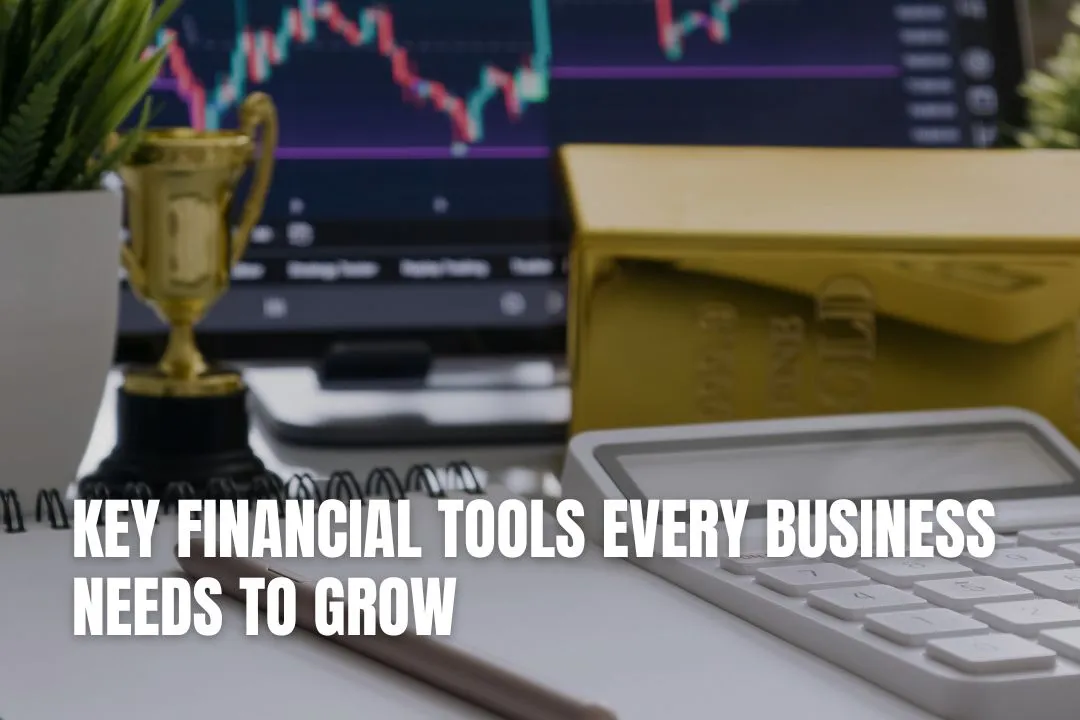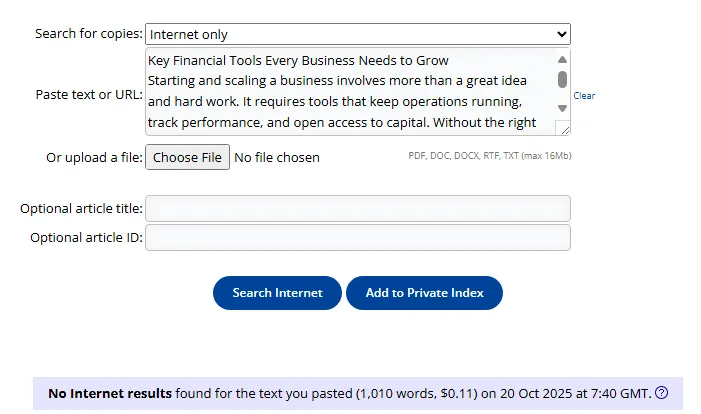
Starting and scaling a business involves more than a great idea and hard work. It requires tools that keep operations running, track performance, and open access to capital. Without the right financial infrastructure, even promising ventures can stall.
In 2025, businesses face both new opportunities and new challenges, from digital-first customers to fast-moving competitors. This environment makes financial tools more than optional add-ons. They are essential drivers of growth. Whether you're running a startup or managing an expanding company, the right toolkit can reduce friction and improve decision-making.
This guide highlights the key financial tools that support momentum, protect liquidity, and power sustainable expansion.
Starting and scaling a business involves more than a great idea and hard work. It requires tools that keep operations running, track performance, and open access to capital. Without the right financial infrastructure, even promising ventures can stall.
In 2025, businesses face both new opportunities and new challenges, from digital-first customers to fast-moving competitors. This environment makes financial tools more than optional add-ons. They are essential drivers of growth. Whether you're running a startup or managing an expanding company, the right toolkit can reduce friction and improve decision-making.
This guide highlights the key financial tools that support momentum, protect liquidity, and power sustainable expansion.
Modern accounting tools give businesses more than just balance sheets. They centralise revenue, expenses, tax prep, and forecasting in one place. Platforms like QuickBooks, Xero, and FreshBooks offer real-time visibility into cash flow. That means founders no longer wait for quarterly reports to spot problems.
Automation is one of the strongest benefits. With features like auto-categorised transactions and bank syncing, small teams can stay on top of daily finances without hiring a full-time accountant. Some tools even integrate payroll, eliminating the need for duplicate entries across systems.
Accuracy matters too. Whether you're preparing for an investor pitch or filing taxes, reliable financial data builds credibility. Mistakes can cost money or trigger audits. The right software catches issues early, preventing surprises.
Every business depends on getting paid, and waiting weeks for checks in the mail slows growth. Digital invoicing platforms shorten the payment cycle. These tools make it easy to send, track, and follow up on invoices. More importantly, they allow customers to pay immediately with a credit card or ACH transfer.
Faster payments free up working capital. That liquidity supports operations and avoids bottlenecks caused by unpaid bills. Platforms like Wave, Zoho Invoice, and Square Invoices give users visibility into who has paid, who’s late, and when to nudge a client.
Some even automate reminders, helping businesses maintain a professional image while nudging slow payers. They also generate branded templates, so the company looks polished every time a new invoice goes out.
Liquidity can make or break a business. Even a profitable company can collapse if it cannot meet short-term obligations. Managing liquidity well involves understanding the flow of cash and having tools that support flexibility.
Business credit cards are more than a payment method. They offer a flexible line of credit that businesses can tap during seasonal slumps or when revenue is delayed. The best cards come with cashback rewards, zero annual fees, and detailed expense reporting.
These cards are especially valuable for startups that need to separate personal and business expenses. They also make it easier to track spending by department or employee, which helps with budgeting and cost control. For new companies, applying for a business credit card can also be a practical first step toward building financial credibility. It signals to banks and suppliers that the business is committed to managing funds responsibly and keeping its accounts transparent.
Cash reserves give businesses a safety net. Whether it’s for equipment failure or a delayed client payment, having money set aside prevents panic. Businesses should aim to maintain at least three months’ worth of operating expenses in a liquid account.
Tools like high-yield business savings accounts make these reserves more productive. While interest rates won’t transform your bottom line, they at least keep the emergency fund from losing value to inflation.
Understanding where money is going day by day is different from glancing at monthly reports. Cash flow dashboards provide real-time insights into inflows, outflows, and forecasted balances. Some platforms even simulate future scenarios, helping leaders plan for the best or worst case.
Tools like Pulse, Float, and Cash Flow Frog give small businesses clarity without the need for spreadsheets. These platforms pull data from accounting software, turning complex financial patterns into simple visual summaries.
Budgeting tools do more than set limits. They support strategic thinking by mapping out how much can be spent and where. Platforms like PlanGuru, LivePlan, and Float help business owners allocate funds across marketing, hiring, and product development.
Clear budgets prevent waste and encourage smarter investments. These tools also let owners run different scenarios, comparing how growth might change if they spend more in one area or cut back in another. This kind of forward-looking analysis is essential for growth-stage companies.
Budgets can be adjusted in real time when integrated with accounting software. That flexibility helps teams adapt quickly without losing focus on their financial targets.
Having the right tools is only half the equation. They need to work together. Financial tools should not operate in silos. Integrations between accounting software, invoicing, dashboards, and budgeting platforms create a more accurate and efficient system.
The fewer times data is re-entered manually, the less room there is for error. Integration also gives decision-makers a single source of truth. With everything synced, reports reflect the current state of the business, not last month’s snapshot.
This level of transparency supports investor confidence, simplifies tax prep, and helps teams stay aligned. As companies grow, this becomes less of a convenience and more of a non-negotiable need.
No matter the industry, business growth depends on a strong financial footing. From daily operations to long-term planning, the tools outlined here help leaders make better choices, preserve liquidity, and position their companies to scale.
Building the right stack early saves time, avoids confusion, and keeps your focus on progress rather than putting out fires. Whether you’re managing your first year or planning your fifth expansion, the right financial tools can turn momentum into measurable results.

Your first priority should be modern accounting software like Xero or QuickBooks. It acts as the financial hub for your entire operation, helping you track income and expenses accurately from day one and making tasks like tax preparation much simpler.
Digital invoicing speeds up the time it takes for you to get paid. By sending professional invoices with a direct payment link, you make it easier for clients to pay you immediately. This shortens the payment cycle and puts cash back into your business faster.
Profitability doesn't always equal liquidity. An emergency reserve, typically three months of operating expenses, acts as a crucial safety net. It protects your business from unexpected costs or a sudden drop in revenue without forcing you to take on debt or halt operations.
Not at all. While they help control costs, their main purpose is to guide strategic growth. They allow you to plan how to invest in different areas of your business, test financial scenarios, and ensure your spending is aligned with your long-term goals. For expert guidance on this, consulting with a firm like Robinwaite can provide additional clarity.
The right tools work together seamlessly. If you find yourself manually entering the same data into multiple systems or struggling to get a clear, real-time picture of your finances, it's a sign your tools are not properly integrated. Your financial stack should provide a single source of truth.